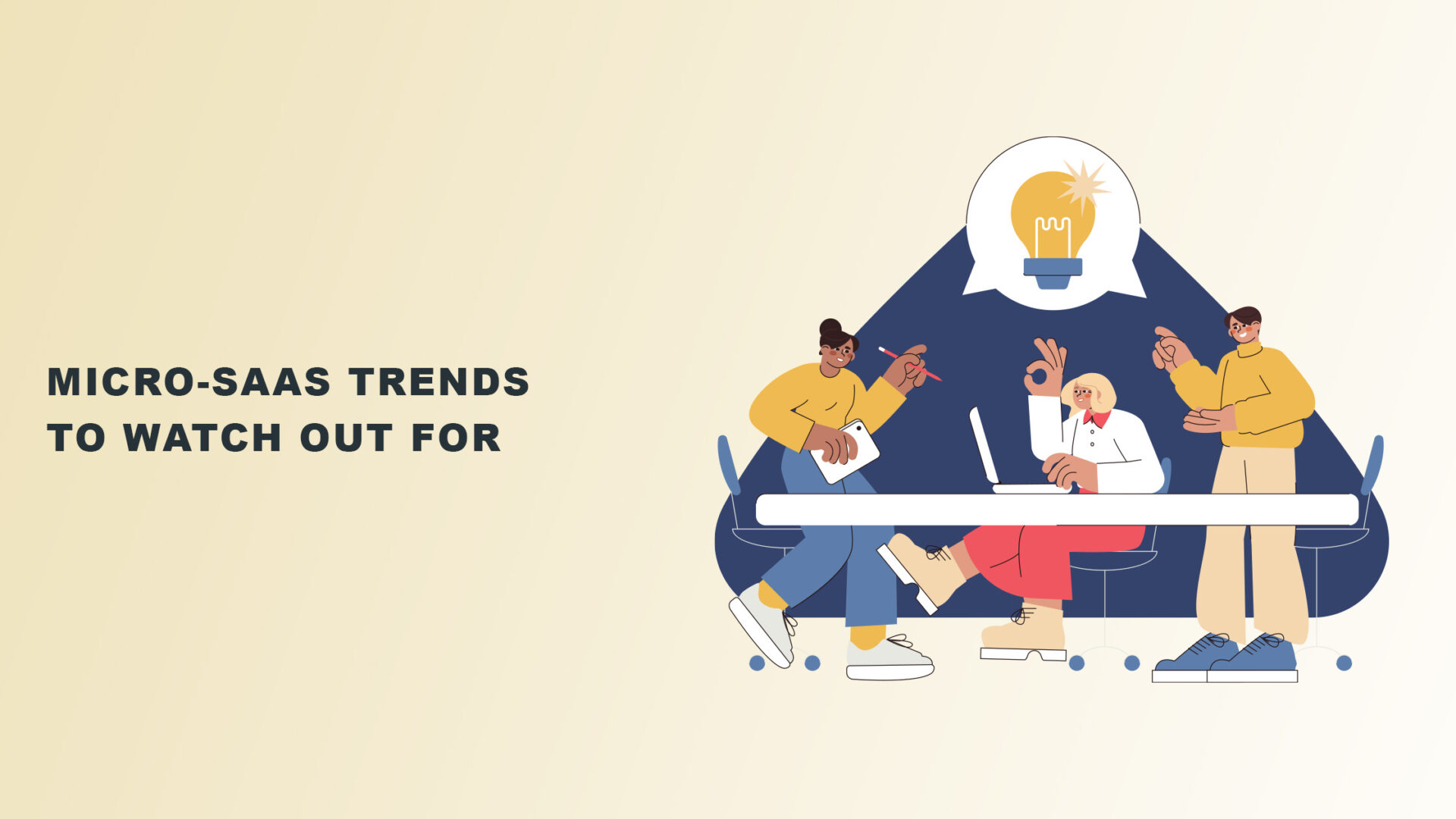Given how technology keeps advancing at lightning speed, it makes sense that things like micro-SaaS trends can be intimidating for many.
Still, micro-SaaS grows in demand every day, so whether you use micro-SaaS for your business, want to use it, or develop micro-SaaS, knowing the latest trends can help you.
Keep reading to learn about the top ten micro-SaaS trends as you head into 2023.
1. Artificial Intelligence and Machine Learning

Artificial Intelligence (AI) is no longer a fantastical topic in science fiction movies but a critical aspect of business operations.
People were once hesitant to trust AI with their businesses, but now, it’s an essential tool if you want to be efficient and modern.
This is because AI makes it easier to understand data and analytics and make informed decisions.
It can also make suggestions and help business owners weigh the pros and cons of a business move.
This is useful because people are easily influenced or swayed by emotions, whereas AI is emotionless, helping business owners make more logical decisions.
A decent AI program can help a business achieve its goals sooner and understand the potential for scaling, whether in size or services.
In addition to helping business owners understand their company’s progress, AI remembers preferences and past purchases, creating an optimized shopping experience for consumers.
Apart from that, it improves customer service by automating tasks without making customers wait or feel ignored.
Along with AI, machine learning is one of the fastest-growing micro-SaaS trends.
Machines can be trained or programmed, but now, they can also teach themselves and gain experience that enhances their skills.
With machine learning, humans can focus on more complex and nuanced tasks, while machines can handle more mundane, repetitive, and tedious actions.
It’s a type of AI that is possibly the most helpful in business.
2. Vertical SaaS
Vertical SaaS is a rather complex topic but a significant trend to understand if you work with SaaS companies.
Vertical SaaS is a cloud-computing software solution focused on a specific industry.
The specific niche gets targeted vertically, meaning the SaaS is only conducive to this particular industry.
This type of SaaS can give businesses cleaner software solutions that cater to their exact needs.
For example, vertical SaaS for an automotive company will help the business track vehicles, repairs, and other tasks.
Companies looking to scale or reach more customers will benefit the most from vertical SaaS, as it can help establish clearly defined goals.
It’s also helpful for newer businesses looking to establish themselves.
3. PaaS

A recent trend to keep an eye out for is SaaS becoming or teaming up with Platform as a Service (PaaS).
PaaS and SaaS may seem similar, but they have notable differences.
PaaS is about keeping everything on the cloud, so data and tools are accessible from anywhere, not just at the office.
Instead of hardware installed on a single computer or network, a PaaS company can install hardware and software on a cloud platform.
This setup allows people to access the same tools at home as they can at work, so everything an employee might need, they can access over the internet.
PaaS, along with SaaS, are cost-effective and time-saving setups that will likely become an essential part of running a business.
More and more companies are using PaaS to streamline operations, and this trend will likely continue to spread like wildfire.
4. Mobile Optimization

With smartphones and tablets, people can stay up-to-date on their company’s analytics and progress from anywhere, whether at home on the couch or traveling on a busy train.
This is especially true for SaaS companies that are pivoting toward a mobile optimization-first approach.
Instead of starting with desktops and then moving onto mobile devices, developers can create SaaS and other platforms for mobility first and foremost.
This pivot toward mobility will allow business owners to share reports and communicate instantly.
The mobile capabilities of SaaS are also important for companies who do business globally.
It promotes productive international business and can help companies scale and expand further.
5. No-Code Tools

Micro-SaaS can seem intimidating to individuals and businesses outside the tech industry.
However, no-code tools are on the rise, making SaaS and PaaS more accessible than ever.
No-code tools mean even business owners and employees with little to
no advanced tech and coding skills can still use and customize SaaS.
They help people make changes and updates without hiring a coder or software developer.
No-code tools can also give business owners more power over their operations and websites.
Technology can be daunting, but no-code tools and similar trends make micro-SaaS and other advancements more accessible to people outside the tech sector.
6. Integrated API

As cloud-based apps become popular in many industries, functional API integrations are becoming more and more essential.
API integrations allow applications to connect, communicate, and sync with one another so that you can perform multi-app tasks without leaving one application.
Because these integrations offer a seamless user experience between different software, they make digital tasks and operations easier for businesses and their customers.
They are particularly valuable when dealing with data and analytics.
7. White-Label SaaS
White-label SaaS is a specific service that allows businesses to receive online services with their own brand or custom content.
Adding personal branding to software was once very difficult and expensive.
But now, it’s easy for SaaS to add some light branding or provide an unbranded service, thus revolutionizing how companies can use these services to bolster their brand.
With white-label SaaS, customers can use branded services without taking on significant financial risk by investing in personalized software development.
You can personalize a white-label SaaS to meet specific needs, meaning you can cater to customers more than ever.
Because everyone, especially business owners, prefers a personalized service or product, this trend will likely only grow in popularity.
8. Security and Privacy

Security and privacy have always been vital in the online space. But as data mining, targeted ads, and hacking become more prevalent, customers are becoming more conscious of cybersecurity.
Many micro-SaaS products are taking extra steps and precautions to keep customer information and data as secure as possible.
Unfortunately, as developers build bigger and better firewalls and intricate encryptions, hackers and cybercriminals also become more cunning.
Even the best websites can fall victim to malware, ransomware, or IT outages, while security breaches can slow down supply chains and harm business reputation.
For this reason, many micro-SaaS emphasize their commitment to their customer’s privacy and the security of their platform.
Some micro-SaaS are security services themself, exemplifying the demand for increased cybersecurity and privacy protection.
You can expect this trend to result in the success of many cybersecurity companies and services.
This micro-SaaS trend is one of the most positive ones you’ll likely see in 2023.
9. Cross-Platform Tools

A significant trend in the micro-SaaS niche heading into 2023 is integration.
Many customers want to be able to combine the many services they use to run their business in one place.
The good thing is that third-party integrations make this possible.
Integrations create a unifying experience, creating a convenient hub for customers to manage multiple aspects of their business in a single place and offering a clear picture of progress and growth.
Overall, CRM and cross-platform tools are essential in keeping customers engaged and happy.
Achieving business goals when you look at the big picture is much easier, so this trend will make micro-SaaS thoroughly more valuable for company owners.
10. Customer Experience

More and more micro-SaaS companies understand how valuable a happy customer is.
This makes them consistently work to improve user experience, whether on the customer service end or with the software interface.
After all, retention is the name of the game. And to improve customer retention, consistent improvements and updates are key to keeping loyal customers happy and engaged.
Some of the customer experience trends you’ll notice may include 24/7 customer support, live chat features, enhanced navigation menus, and fast bug fixes.
Final Thoughts on Micro-SaaS Trends
Currently, micro-SaaS trends focus on helping people access these services in the most convenient and personalized way possible.
Personalization and mobility is the top priority for most SaaS companies as 2023 begins.
Don’t let these trends slip past you, as they can help you develop better software or enhance your business operations.
Hopefully, this list of micro-SaaS trends has prepared you for what the future has to offer!

